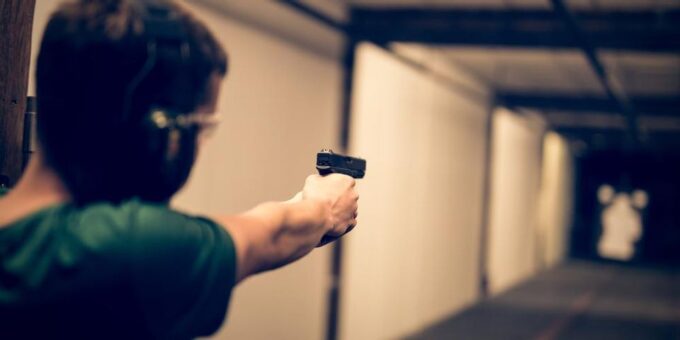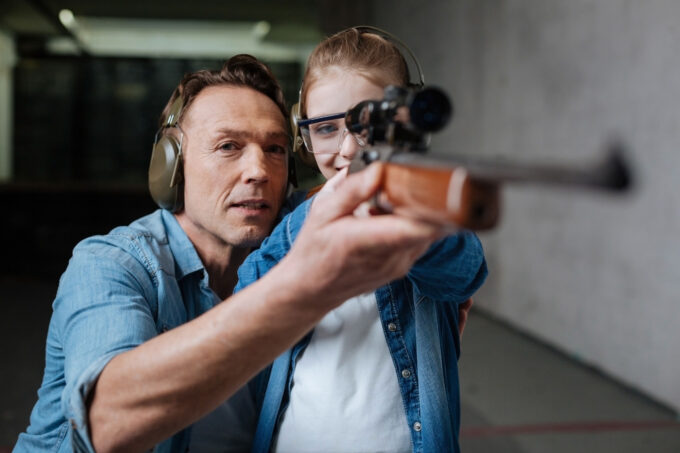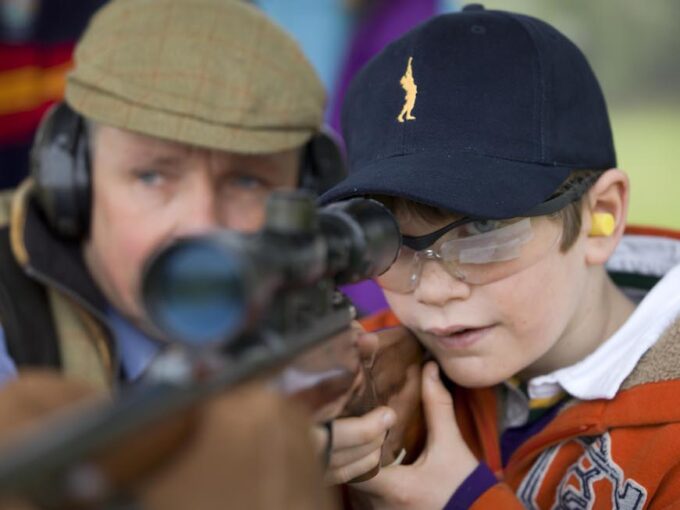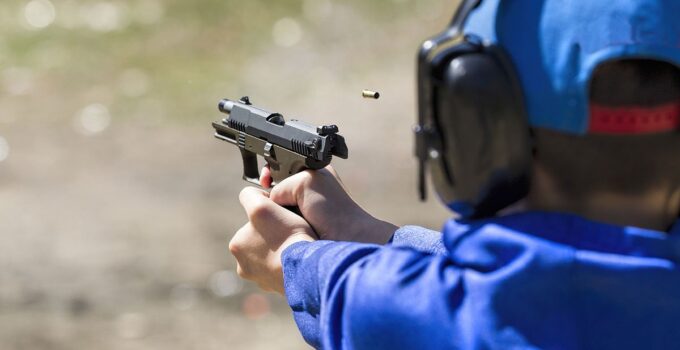When you have a passion and then you have children, you want to share that passion with them. From an early age, you can begin introducing your kids to the language of parts of the firearm, like the very popular AR-15 Rifle featured here.
If firearms and shooting are your passion, when is it appropriate to begin sharing that with your kids?
Introducing them to firearms and shooting sports can begin at any age. One is never too young or too old to share in the joy of knowledge. How can you explain these types of things to your children?
Begin with Safety

Source: connect2local.com
Safety is always first! Without a firm foundation in safety, anyone, child or adult, could be involved in an accident. An effortless way safety can be taught from early age is to tell the child what you are doing (I.e., I am going to target practice).
Then, when you come home and it is time to clean your weapon and prepare it for storage, you can talk your child through each action you take when disassembling the weapon, cleaning it, and reassembling it. To gain a better understanding of all the parts that make up a gun, you can even consider building a firearm with your child using an 80 lower from https://www.80percentarms.com/80-lowers/.
Emphasizing muzzle awareness and how you make a gun “safe” can easily be taught in a repetitious manner at this time. As the child grows, this should be the first things they learn how to do (muzzle awareness and making a gun “safe”), and they should be able to demonstrate them to you before they begin participating in target practice or shooting sports.
Start Small
Every family is different, but you can always begin introducing the ins and outs of firearms as your children grow and play with toys! Muzzle awareness can be learned with plastic cowboy guns, cap guns, and nerf guns.
Little ones can even “practice” cleaning their weapons just like their Mom or Dad. Interact with them. Play with them. Talk about what you are doing or what they are doing.
Let them ask you questions during games. Pretend play is a wonderful way to have fun with your kids and teach them life lessons that they will remember for many years to come.
Take them to the Range with You

Source: texasgunclub.com
Each family and each child will be different, but when you are both ready, take your son or daughter to the range with you! Many local ranges have family days throughout the year where they have vendors and the like visit and create a family friendly atmosphere.
Often there are food trucks, games, and small competitions for the children. Some history lessons may even be mixed in!
Call up your local gun ranges and ask them if they have a family day coming up or if they know of one in the area. They will be more than happy to assist you in educating and training your young one in the ways of firearms and shooting sports!
They can experience the thrill and importance of protocol while watching how you properly care for the weapon, load the weapon, and discharge the weapon.
Allow Them to Compete
This step can be especially difficult on Mom and Dad. Once your child reaches the appropriate age where they can begin competing in shooting competitions, you can enter them into one for their own age range.
It can be nerve wrecking to allow your son or daughter to compete in a competition with real weapons with live ammunition. This is the best way for them to show what they have learned and learn what they may have forgotten.
Competition can be a great motivator, especially for children. There are always staff and supervisors on hand, helping to create the safest environment possible.
Risk is always involved no matter what your child participated in, but those who know firearms and firearm safety are aware and well equipped to handle competitions in a safe manner.
Allowing your child to compete when they are ready will help instill in them the confidence they need to continue honing their marksman skills. Encourage them and cultivate them, even when it may be scary. How else did you learn? How else will they learn?
Establish Communication and Trust

Source: schoolhousemagazine.co.uk
Even with all of this, how will you know when your child is ready for “the real deal”? As stated before, every family and every child will be different with varying circumstances.
Therefore, the “how, when, and why” for you may be different than for another family. The important thing is that you have communication and trust between you, your child, and whomever may be helping them learn about firearms and competition shooting.
The child must be able to thoroughly communicate their understandings, misunderstandings, questions, and concerns with you. If they cannot do this, then you do not want to place a weapon in their hands.
You can still play “cops and robbers” with them and display proper firearm safety, but they will not be old enough to work with a real firearm. They must be able to communicate with you and understand everything you say to them (or be able to ask when they do not understand).
Conclusion
Trust is key with any partner, competitor, or student-teacher relationship. Without a foundation of trust, many mistakes will be made. You must be able to trust your child to listen to your instruction, communicate with you, and do what they are told in the way they are told to do it.
Your child must also trust that what you (or another teacher) tell them is the safe and correct way to do something. If this trust breaks down, then the firearms should be set aside for the time being until you can establish trust between the two of you again.
There are life lessons to be learned throughout the process of introducing your children to the joys of firearms and shooting competitions. They will learn respect, discipline, and honor in these skills. Take the time to instruct them in the way they should go, and they will benefit well!







